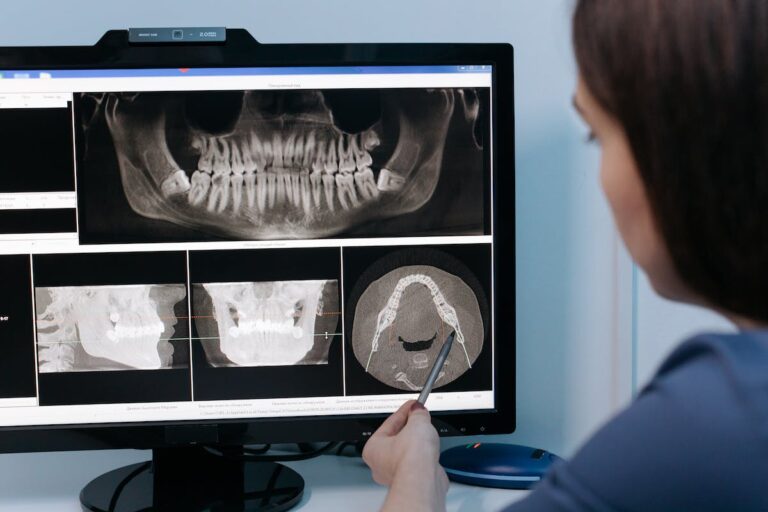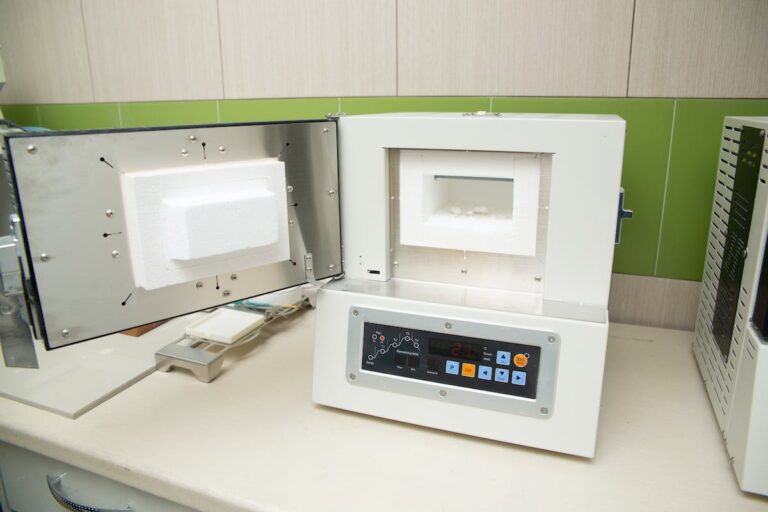Inventory management in healthcare, particularly within clinics, is pivotal for operational efficiency and patient safety. It demands a fine balance of meeting supply needs without overstocking, to prevent wastage. The complexity lies in managing diverse inventories like pharmaceuticals and medical equipment, each subject to unique requirements and regulations. Effective strategies include accurate record-keeping, regular stock checks, and utilization of advanced inventory management software. Beyond logistics, inventory management significantly affects patient safety and care quality, making it crucial in healthcare administration.
Understanding Clinic Inventory Needs
Efficient clinic inventory management demands a strategic understanding of unique healthcare needs, primarily through inventory forecasting and demand analysis.
Inventory forecasting predicts medical supplies and medication quantities needed over a specific period. It factors in seasonal health trends, historical usage, and planned procedures, minimizing overstock and stockouts, reducing costs, and optimizing patient care.
Demand analysis examines clinic consumption patterns, tracking item usage rates to project future needs. This approach aids efficient stock replenishment, ensuring continuous availability of essential supplies.
These inventory management facets allow clinics to control inventory while being well-equipped for quality healthcare service delivery.
Importance of Accurate Record-Keeping
In clinic inventory management, accurate record-keeping is essential for strategic resource allocation, monitoring, and utilization, thereby enabling optimal patient care. It boosts operational efficiency and complies with record-keeping legislation.
Accurate records allow clinics to:
- Conduct exact inventory audits, identifying discrepancies to prevent stockouts or overstocking.
- Fulfill legal requirements of record-keeping legislation, averting penalties.
- Make procurement decisions based on reliable consumption patterns and trends.
Analyzing inventory records can disclose trends and guide strategic decisions. In contrast, inaccurate or incomplete records can cause waste and inefficiency, impeding patient care.
Inventory audits ensure record accuracy and highlight improvement areas. Adherence to record-keeping legislation signifies clinic’s commitment to transparency and accountability.
Implementing Regular Stock Checks
Regular stock checks, pivotal for efficient clinic inventory management, accurately indicate resource availability and usage. This process optimizes stock balance, fulfills patient needs, and reduces wastage and costs.
Stock rotation methods, including First-In-First-Out (FIFO) and Last-In-First-Out (LIFO) techniques, prevent stock obsolescence or spoilage, ensuring efficient item utilization based on purchase or expiry dates.
Accurate inventory checks facilitate precise inventory valuation techniques affecting financial reporting and profitability analysis. The Weighted Average Cost (WAC) or Specific Identification (SI) methods provide a realistic financial position of the clinic, depending on the inventory nature.
Leveraging Inventory Management Software
Strategic deployment of inventory management software is crucial for optimizing clinic inventory control. The steps include selecting software that matches clinic needs and operational dynamics, and devising an effective implementation strategy for seamless transition and maximum software utility. These actions optimize NLP processing, semantic search relevance, and prevent redundancy while preserving context.
Software Selection Process
Choosing inventory management software is a critical task requiring careful examination of a clinic’s specific needs. Priority should be given to cost-efficient software offering strong ROI. Vendor negotiation aids in acquiring suitable pricing and terms.
Factors to consider include:
- Scalability: Software should match clinic growth and evolving requirements.
- Integration: Software needs to blend with current systems for fluid operations.
- Support and Training: Vendors must offer thorough support and training for implementation and usage.
These aspects guide clinics in making informed choices for effective inventory management.
Software Implementation Strategy
After selecting suitable inventory management software, clinics should create a focused implementation strategy for optimal inventory control. This plan should highlight software customization, aligning it with the clinic’s specific inventory processes for increased accuracy and efficiency. User adaptability is critical to a successful system roll-out, necessitating staff training for software familiarity and reduced resistance. Regular post-implementation reviews and adjustments ensure continuous improvement. This thoughtful approach maximizes the advantages of inventory management software in clinics.

Techniques for Reducing Stock Obsolescence
To lessen the financial burden of stock obsolescence in clinics, several concise and focused strategies are suggested. Primary among them is obsolescence forecasting, a forward-looking approach that leverages data analysis to predict the lifespan and utilization trends of medical supplies. By anticipating potential obsolescence, clinics can avoid overstocking and obsolescence risk.
Moreover, executing effective disposal strategies for outdated stock is key. Such tactics may include selling expired products at reduced prices or donating them to charities before they expire. These methods not only cut financial loss, but also reinforce clinics’ reputation for responsible stewardship.
Further practices to minimize stock obsolescence include:
- Regular inventory audits: Systematic checks can pinpoint slow-moving or outdated items, enabling their prompt removal.
- First-In-First-Out (FIFO) method: This inventory practice ensures older stock is used first, reducing obsolescence risk.
- Vendor return policies: Clinics should negotiate return policies with vendors that allow product returns as their expiration dates approach.
These strategies, when combined, can notably lessen the financial impact of stock obsolescence in clinics.
Emphasizing Just-in-Time Inventory
Just-in-Time (JIT) inventory, a strategy for streamlining clinic operations, needs precise understanding due to its patient care and clinic performance implications. This system lowers holding costs and boosts operational efficiency. Implementing JIT in clinics requires a comprehensive strategic plan.
Understanding Just-in-Time Inventory
The Just-in-Time (JIT) system in inventory control emphasizes efficiency by acquiring goods when required, eliminating large inventory costs. JIT’s effectiveness relies on precise demand forecasting for adequate supply without surplus. Timely delivery is ensured through strong supplier relationships. Understanding lead times is crucial to accurately schedule orders, considering potential delivery delays. Thus, JIT presents a lean, cost-effective inventory management approach for clinics.
Benefits of JIT System
The JIT system, when efficiently implemented in clinics, yields significant benefits. It reduces inventory costs, optimizes cash flow, and enhances patient care by ensuring timely supply of medical necessities. However, it’s critical to evaluate potential supply chain disruptions that could affect patient care. A comprehensive JIT cost analysis should balance these risks against financial savings and operational efficiencies. Strategic planning and monitoring are necessary to counteract potential JIT issues. The benefits, however, are significant. Lower stock levels result in fewer wasted resources, optimized storage, and quicker response to demand changes. Therefore, JIT is a potent tool for effective clinic inventory management.
Implementing JIT in Clinics
Implementing Just-in-Time (JIT) system in clinic settings requires strategic planning and meticulous execution for optimal inventory control. Challenges include precise timing, rigorous coordination, and high-stake consequences for errors. Key elements include:
- Forecasting: Clinics must accurately predict patient needs to prevent stockouts or overstocking.
- Supplier Relationships: Dependable, responsive suppliers are vital to manage fluctuating demands.
- Staff Training: Healthcare professionals require sufficient training for effective JIT system adaptation.
Despite challenges, JIT implementation can enhance patient satisfaction by ensuring supply and equipment availability, reducing wait times, and improving clinic efficiency. Thus, proper JIT execution can revolutionize healthcare inventory management.
Strategic Vendor Relationships Management
Strategic vendor relationship management is vital for optimal clinic inventory control. It requires a systematic, meticulous approach, with vendor evaluation at its core. This critical step assesses the vendor’s reliability, cost-effectiveness, and product quality. A rigorous evaluation reveals supply chain strengths and weaknesses, guiding strategic decisions.
Negotiation is a key component of vendor management. Effective negotiation secures better prices, faster delivery, and favorable terms. It necessitates understanding vendor capabilities, clinic needs, and market dynamics.
Consistent communication, regular performance review, and constructive feedback are essential in vendor relationship management. They ensure alignment between clinic and vendor and foster continuous improvement. The aim is a symbiotic relationship that benefits both parties: an efficient, cost-effective inventory system for the clinic and a dependable, long-term customer for the vendor.
Staff Training in Inventory Management
Inventory management staff training is vital. It imparts necessary skills for efficient inventory handling, maintenance, and optimization. It significantly influences operational efficiency and patient satisfaction in clinics.
Effective training components include:
- Inventory categorization strategies comprehension and application. It aids in prioritizing items based on usage frequency and cost, ensures timely restocking, and prevents overstocking.
- Profound understanding of the ‘Inventory turnover ratio’. This essential metric reveals inventory management efficiency and highlights improvement areas.
- Skill development for inventory management software use. It promotes automation, reduces human error, and aids in accurate inventory record maintenance.
Staff training is an investment, not an expense. Returns on this investment include improved inventory control, minimized stockouts, and overstock situations, and enhanced patient care. This approach to inventory management empowers staff, improves morale, and fosters accountability.
Ensuring Patient Safety With Inventory Control
Inventory control, when effectively implemented, acts as a protective mechanism, reducing patient risks linked to stockouts or outdated medical supplies. The focus is on strategic inventory management to prevent any compromise to patient safety.
A vital aspect of inventory control is managing expired medications. Failures here can pose serious health risks to patients and legal and reputational consequences for the clinic. Hence, it’s crucial to have a system monitoring medication expiration dates.
Applying a First-In-First-Out (FIFO) strategy can help mitigate the risk of using expired medications. Regular inventory audits can spot discrepancies and ensure safe stock levels.
Using advanced inventory control systems can offer real-time stock level and expiration date updates. This reduces human error and boosts efficiency.

Addressing Inventory Theft and Loss
To maintain clinic operations and financial stability, addressing inventory theft and loss is crucial. This requires a robust system encompassing theft prevention and loss detection.
Strategies for theft and loss mitigation include:
- Controlled Access Implementation: Restrict inventory access to authorized personnel only. Employ security systems like key card access, CCTV cameras, and alarms.
- Regular Audits: Regularly auditing inventory identifies discrepancies and loss patterns, enabling swift action and theft prevention measure enhancement.
- Automated Inventory System Investment: These systems track inventory levels in real-time, assisting in loss detection through identification of abrupt inventory reductions, potentially signaling theft or loss.
The Environmental Impact of Inventory Control
Balancing inventory control and environmental sustainability is a crucial task for clinics. It demands strategies that minimize waste and promote responsible resource use. This involves a strategic approach that takes into account the full product lifecycle, from procurement to disposal.
Greenhouse emissions, a significant environmental issue, can be reduced through efficient inventory practices. Overstocking results in increased energy for storage and disposal of expired or obsolete items, thus contributing to carbon emissions. However, a just-in-time inventory system can substantially lower these emissions by cutting down overstock and waste.
Sustainable procurement is another impactful strategy. Clinics can align with sustainability goals by opting for suppliers that prioritize eco-friendly practices. This may include choosing products with minimal packaging, sourcing locally to cut down transportation emissions, or selecting items made from recycled or renewable materials.
Evaluating and Improving Inventory Processes
Inventory control management in clinical settings critically involves the evaluation and enhancement of inventory processes. This entails pinpointing inefficiencies in current inventory procedures and tactically executing upgrades to refine these processes. A comprehensive, analytical method is essential to confirm that these enhancements effectively minimise waste, maximise resources, and importantly, advance the delivery of superior patient care.
Identifying Inventory Inefficiencies
Spotting inventory management inefficiencies can streamline clinic operations. This requires a strategic evaluation of processes, and the use of effective detection methods. These methods help predict and resolve unanticipated inventory issues.
Key steps incorporate:
- Usage pattern analysis: Gauging item consumption rates can spotlight stock shortages or surpluses.
- Regular audits: Periodic inventory checks can detect mismatches between recorded and actual stock.
- Supplier performance evaluation: A thorough examination of supplier reliability and cost-effectiveness can indicate areas for improvement or alternative sources.
Streamlining Inventory Procedures
Streamlining inventory requires comprehensive analysis and strategic process enhancement for efficient, cost-effective operations. Automation is crucial, reducing human error risk and boosting productivity by minimizing manual tasks. It offers real-time inventory updates, enabling informed decisions.
Reorder points strategy is effective in averting stockouts and overstock scenarios. It sets a specific inventory level, triggering reorders. Accurate reorder points are determined by monitoring consumption rates and considering lead times.
Streamlining inventory combines advanced technology methods and strategic planning, allowing clinics to maintain optimal inventory levels and promote efficient operations.
Implementing Process Improvements
Inventory process improvement is crucial for clinics to enhance efficiency, cut costs, and maintain necessary supply. Key strategies include:
- Process automation: Increases accuracy, saves staff time.
- Inventory turnover rate monitoring: Identifies underperforming items, optimizes purchasing.
- Regular process reviews: Detects bottlenecks, highlights improvement areas.
These strategies aren’t one-time tasks; they require continuous effort. Regular monitoring of inventory turnover, implementing automation, and system checks can significantly elevate inventory processes in clinics.
Frequently Asked Questions
How Does Inventory Control Contribute to the Overall Financial Performance of a Clinic?
Inventory control boosts a clinic’s financial stability by minimizing waste and costs, enhancing efficiency, and increasing profitability through inventory valuation methods.
Can a Clinic Operate Efficiently Without Implementing a Proper Inventory Control System?
An efficient inventory control system is crucial for clinic operations. Absence of such system could lead to inefficiencies, financial losses and impact patient care. Key benefits of inventory control include prevention of overstocking, reduced waste, and enhanced patient service.
Is It Advisable to Outsource Inventory Control Operations to a Third-Party Service Provider in a Healthcare Setting?
In healthcare, outsourcing inventory control operations to a third-party provider can enhance efficiency, cut costs, and enable focus on key medical tasks. Vendor selection must ensure high service quality.
How Does Inventory Control in a Clinic Setting Differ From That of a Retail Business?
Regulatory demands, patient needs, and medical supply shelf-life make clinic inventory control differ from retail. These factors require specialized clinic inventory management strategies.
How Does Inventory Control Impact Patient Satisfaction and the Quality of Care Provided by the Clinic?
Inventory control’s accuracy bolsters patient trust, guarantees resource availability for high-quality care, and prevents delays or errors, directly influencing patient satisfaction and healthcare quality.






